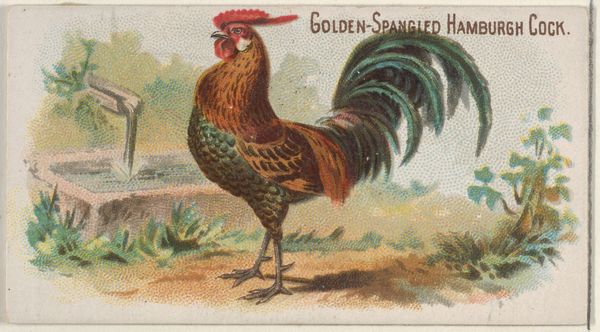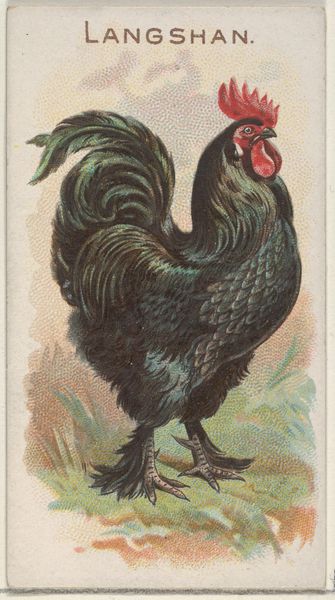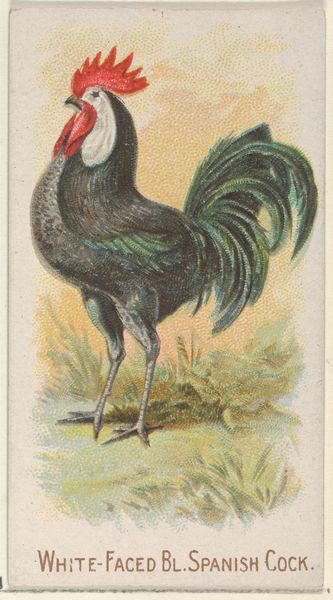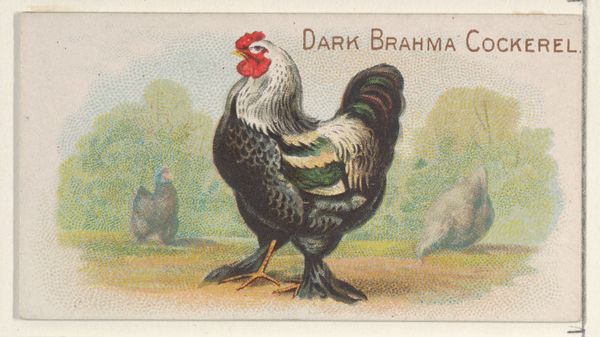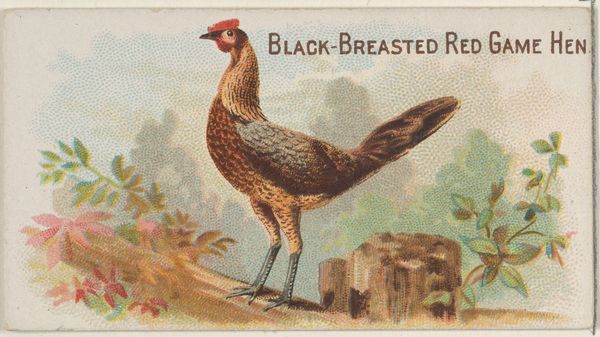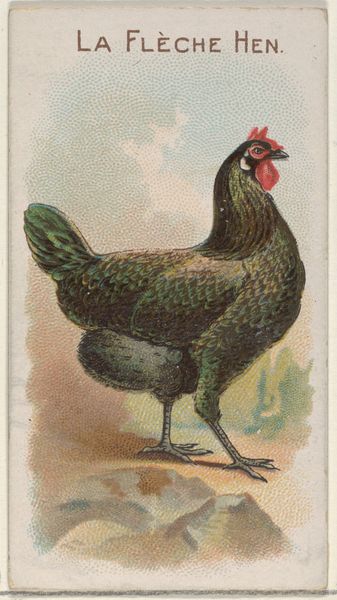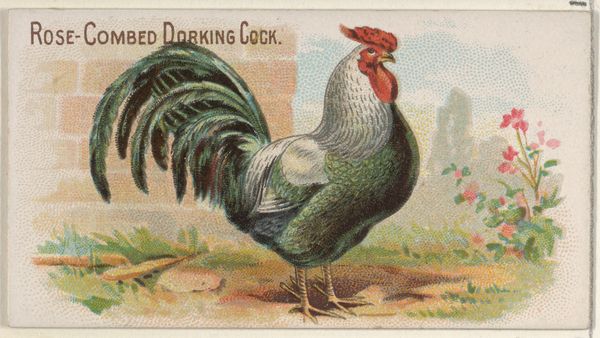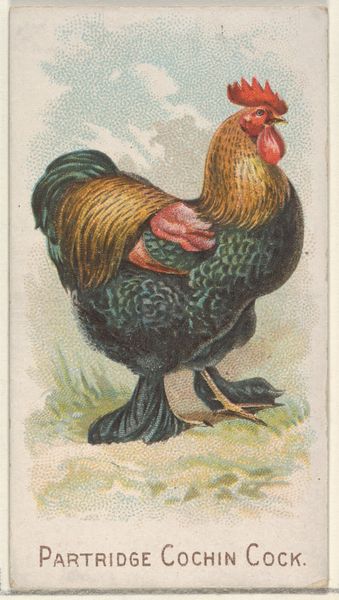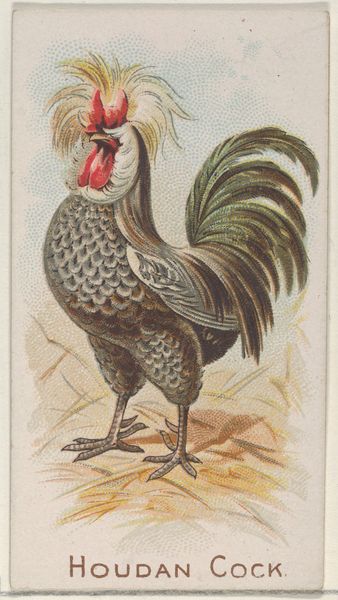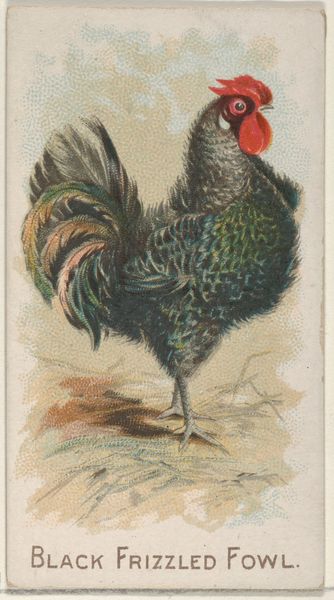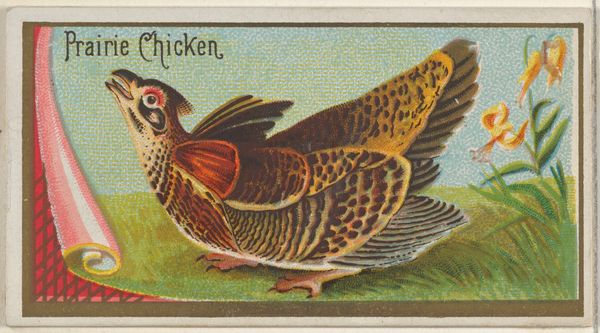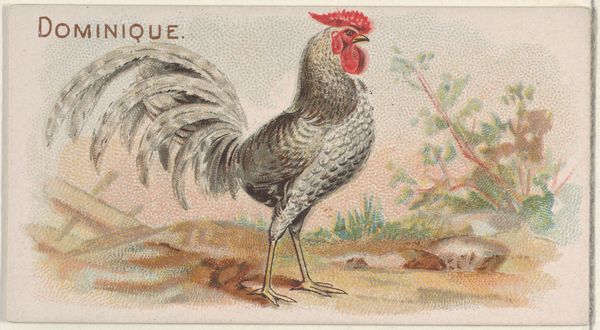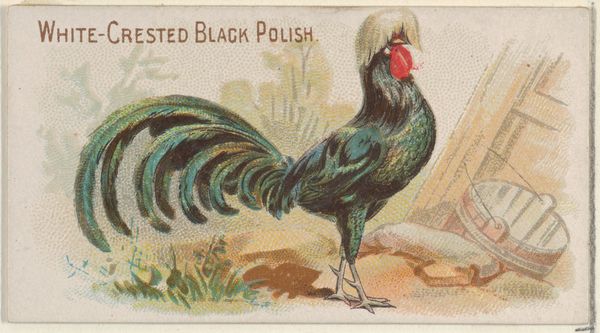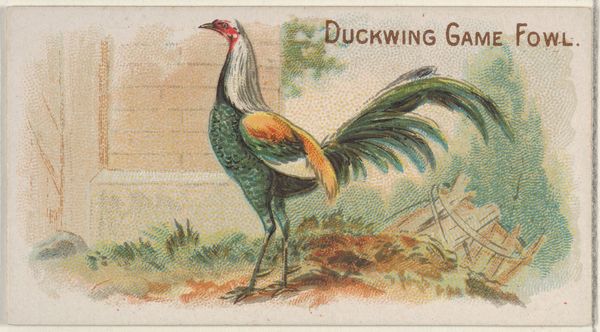
Black Hamburgh, from the Prize and Game Chickens series (N20) for Allen & Ginter Cigarettes 1891
0:00
0:00
drawing, coloured-pencil, print
#
drawing
#
coloured-pencil
# print
#
coloured pencil
#
academic-art
Dimensions: Sheet: 1 1/2 x 2 3/4 in. (3.8 x 7 cm)
Copyright: Public Domain
Curator: Check out this gem from 1891—it's called "Black Hamburgh," and it comes from the Prize and Game Chickens series, put out by Allen & Ginter for their cigarettes. Can you believe this used to come in a pack of smokes? Editor: Wow, it feels so formal for a cigarette insert. The detail is astonishing for something so small—look at the feathers catching the light. I'm instantly reminded of paintings depicting landed gentry on their estates, but, you know, replace the lord with a very handsome rooster. There's a powerful patriarchal analogy lurking there, I think! Curator: Ha! Absolutely, and that’s kind of the brilliance, right? This isn’t just about selling smokes. Allen & Ginter tapped into this whole late Victorian fascination with pedigree and showmanship, equating their brand with quality. The coloured-pencil technique adds this veneer of refinement to a humble bird. Editor: And framing him with what appears to be some sort of archway also elevates his presence and status. Although it is printed, it really gives you this feeling of a meticulously drawn portrait in the academic art style. The gaze is really commanding—a lot of these types of fowl, and I say this in the most respectful way possible, do not evoke such admiration. Curator: The choice of the Hamburg, too, is interesting. They were known for their striking plumage and lively personality, supposedly. It is really a nice drawing. Someone took a lot of time with the feather detailing—you almost want to reach out and touch the bird, like you would feel their smoothness. A little unusual, given what the image's intended commercial purpose was. Editor: Perhaps this hints at a burgeoning turn-of-the-century commodification of nature. Placing it on a pedestal of perfection as a means to inspire consumer desire. Were we really even ready to grapple with such profound questions embedded within our casual habits back then? How do you make cigarettes glamorous, though? This chicken is part of that puzzle, bizarrely enough. Curator: Totally bizarre, and that’s what makes it compelling. These little trade cards offer tiny glimpses into the values and aspirations of that time. Like you were mentioning, who knew a rooster could carry so much… baggage? Editor: In the end, this glorified chicken reminds me to always be curious and questioning. An item you could just find included with cigarettes serves to showcase how even our everyday purchases, as silly as the commodification is, embed larger societal beliefs and cultural standards.
Comments
No comments
Be the first to comment and join the conversation on the ultimate creative platform.
